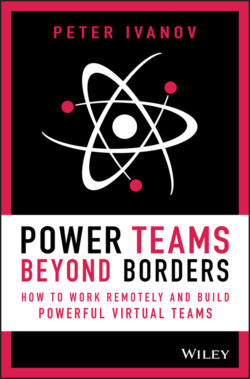Читать книгу Power Teams Beyond Borders - Peter Ivanov - Страница 19
How to Create a Team Vision
ОглавлениеThis may not be the precise definition of a vision, but it will help your team to focus and allow them all to use their superpowers to best effect.
Begin by breaking your team into five groups (depending on how many people you have) and ask the first group to consider the purpose of your team. They need to ask the question, ‘Why do we do what we do?’
Start with Why by Simon Sinek is an excellent book that explores this concept and looks at what makes ‘Why?’ such a powerful question. Understanding your ‘Why’ as a team will give you a lot of energy to tackle your first problem together.
Ask the second group to explore who your target audience is. Who are you trying to reach? What channels are you selling your products through? How do you look after your customers?
The third group should work on identifying the unique selling proposition or unique value proposition. They should answer the question of ‘What's unique about our team?’ and from there identify your value proposition.
The fourth group should consider what your customers get from you that they can't get from anywhere else.
And the fifth group should identify the key resources within the team, and also explain what your team members can get within the team that they can't get anywhere else.
Firstly, allow everyone to contribute individually to the question assigned to their group. In doing so, you give the more introverted team members a chance to contribute effectively and allow everyone to recognise their own word or contribution in the vision statement.
Give each group some time to work on their question together as well and then pass their suggestions on to the next group and so on, until every group, and every person, has considered all five questions. If you're all in the same location you might use five different flipcharts to collect everyone's ideas, but if you're doing this virtually you can use virtual whiteboards. The contributions don't need to be big. They just need to be a few key words or a short sentence for each area.
The key is to ensure that every individual within each of those groups has an opportunity to contribute. You need to make sure that the introverts are encouraged to speak up and aren't spoken over by the extroverts.
Once every group has provided their thoughts on all five of these questions, ask each group to formulate a sentence using all the key words that feature across the whiteboards. This sentence needs to be neither too short nor too long, but it needs to encompass the team's purpose and its essence. Encourage everyone to discuss their ideas as a big group once the smaller groups have finished their discussions.
When you combine what all five groups have come up with, you'll have a team vision. It might need some fine tuning, but the most important thing is that everyone will know they've made a contribution and everyone in your team will identify with the vision.
Once you've reached this stage, you can begin breaking that vision into strategic goals, which is what I'll talk about in the next chapter.
